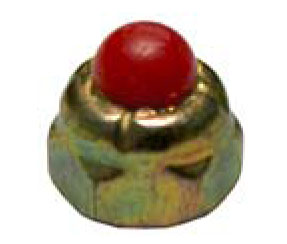
When shopping for nuts, you may come across cap nuts. They typically feature the same hexagonal threaded interior — just like traditional nuts. Cap nuts, however, don’t have an open design. They are known as “cap nuts” because they are capped. For a better understanding of cap nuts and how they work, keep reading.
What Are Cap Nuts?
Cap nuts are threaded fasteners with a dome-shaped cap. Also known as acorn nuts, they are used in conjunction with a bolt. You can hand-twist a cap nut onto the end of a bolt. The cap will simply cover the end of the bolt so that it’s no longer exposed.
Cap Nuts vs Traditional Nuts
Cap nuts differ from traditional nuts with their capped design. You can find them in different materials and sizes. All cap nuts, though, feature a cap on top.
The cap encapsulates the nut’s threaded interior. Rather than being open, cap nuts have a closed top. Traditional nuts, on the other hand, have a completely open design without a cap or cover.
Common features of cap nuts include the following:
- Dome-shaped cap on top that encloses the bolt
- A threaded, hexagonal interior that supports a bolt
- A smooth finish
Benefits of Cap Nuts
With their capped design, cap nuts offer several benefits. The main reason for choosing cap nuts over traditional nuts is to protect the end of the bolt with which it’s used.
Both cap nuts and traditional nuts are used with bolts. After placing a bolt through two or more parts, you can secure it with a nut. The nut will hold the bolt so that it doesn’t fall out of the parts. The problem with traditional nuts is that they leave the end of the bolt exposed. If it’s exposed to moisture or other environmental contaminants, the end of the bolt may corrode. Cap nuts prevent this from happening by covering the bolt and protecting it from damage.
Cap nuts are also aesthetically pleasing. Rather than leaving the end of a bolt exposed, you can cover it with a cap nut. The cap nut will complete the bolt while offering a cleaner and more polished finish in the process.
In Conclusion
While they offer several benefits, cap nuts still have some disadvantages. You can’t twist them all the way down a bolt, for instance. The cap significantly limits how far you can twist them on a bolt.



